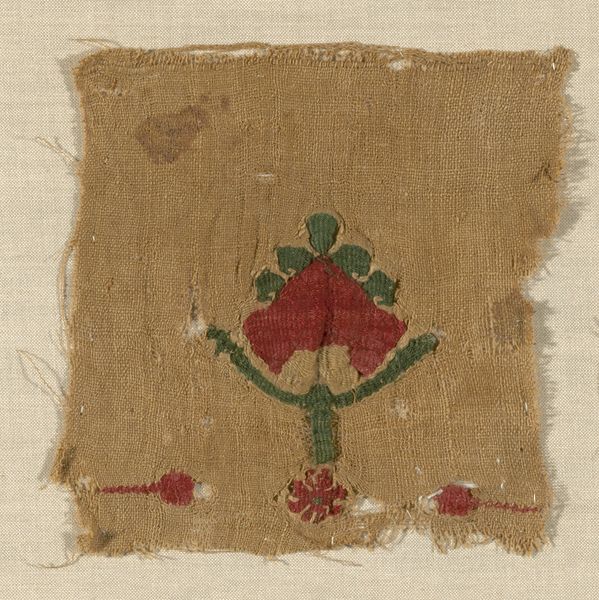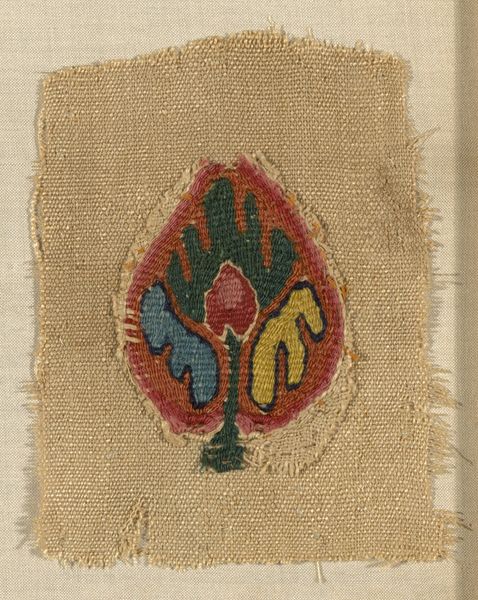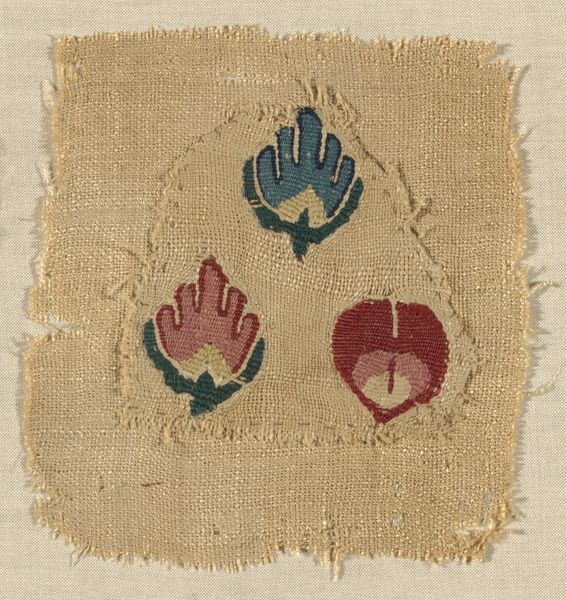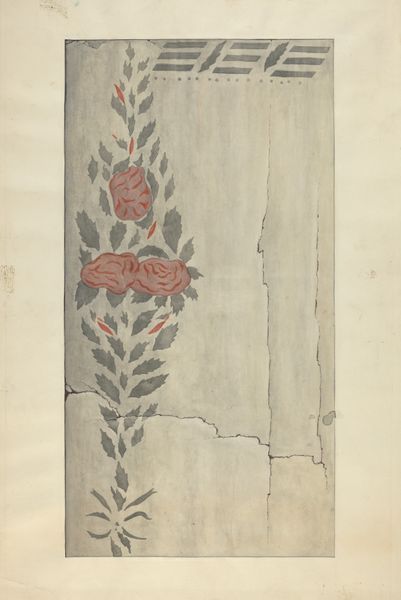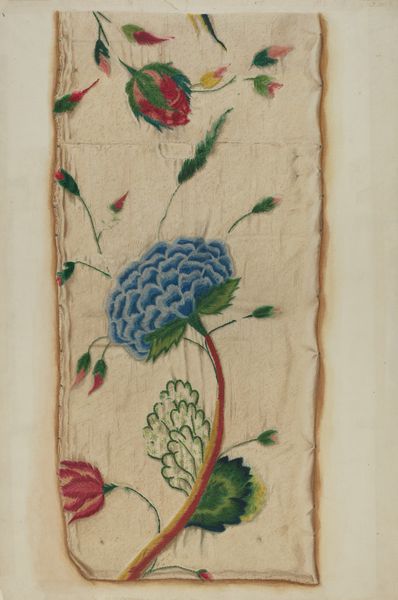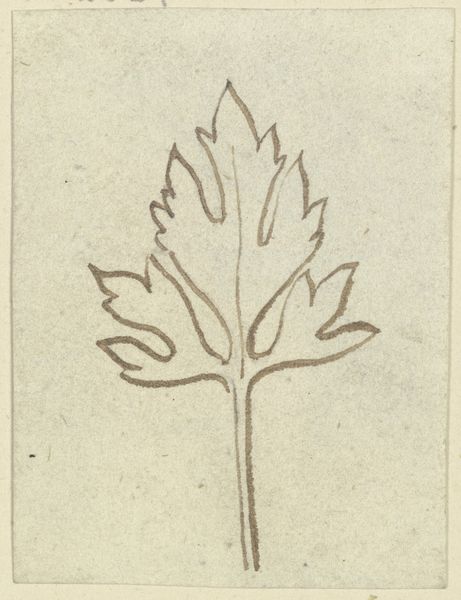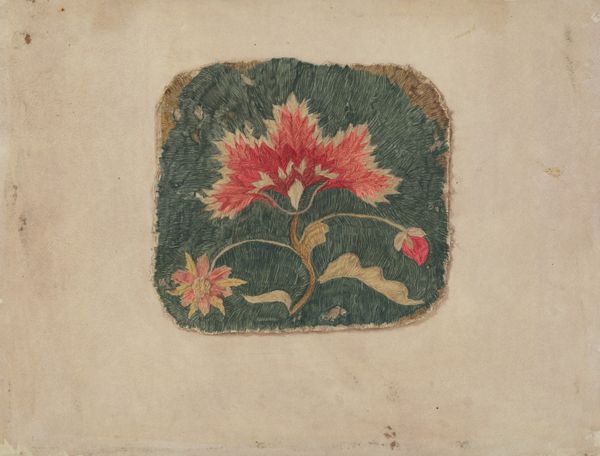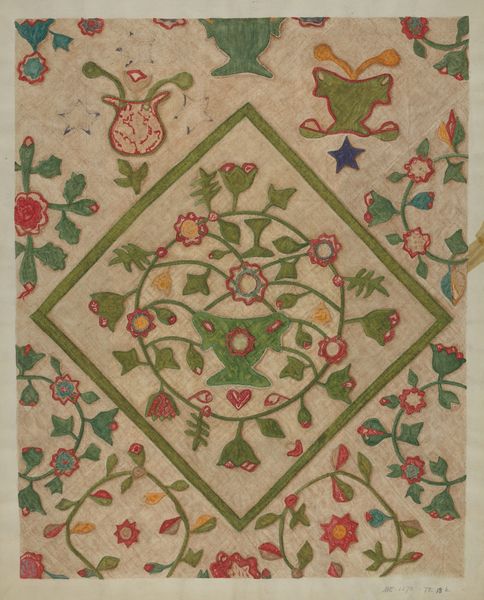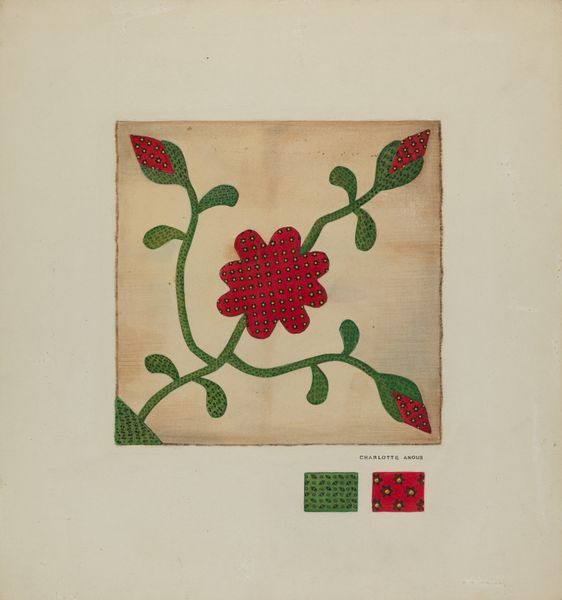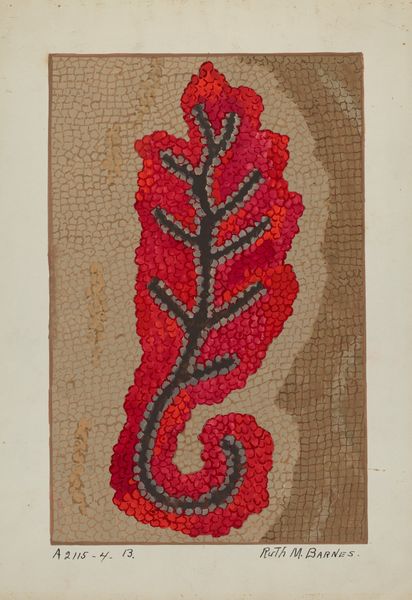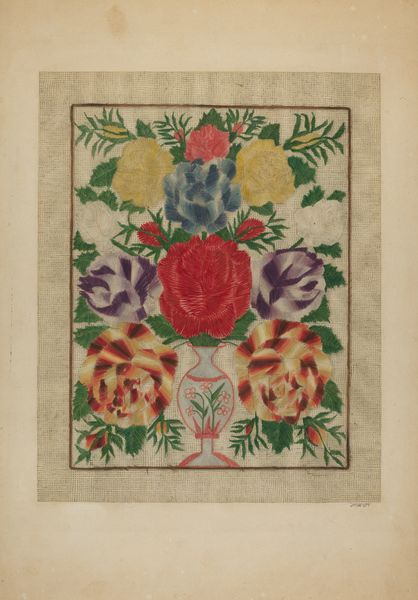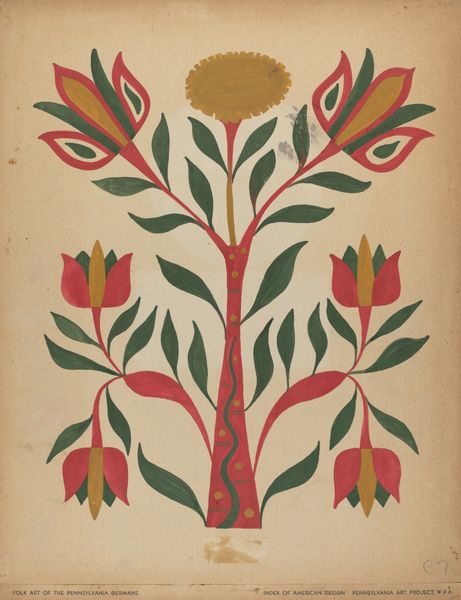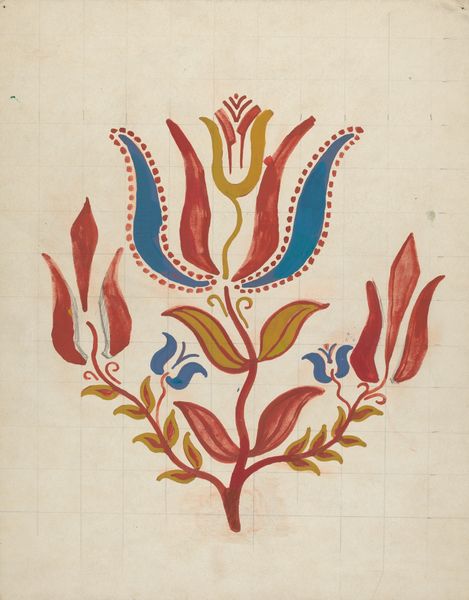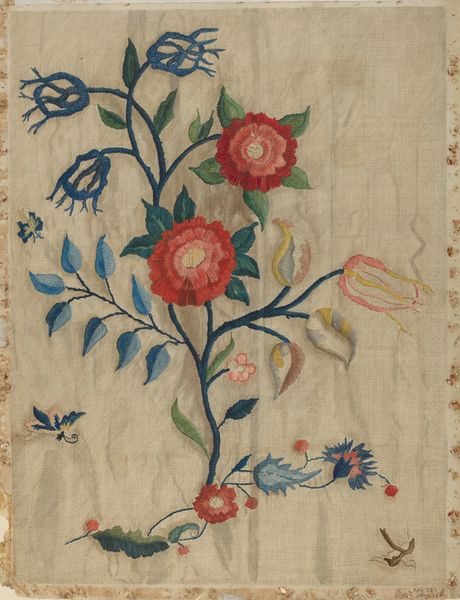
weaving, textile
#
weaving
#
textile
#
ancient-egyptian-art
#
form
#
ancient-mediterranean
#
line
#
islamic-art
Dimensions: 10.2 × 8.3 cm (4 × 3 1/4 in.)
Copyright: Public Domain
This small textile fragment with a stylized flower comes from Coptic Egypt, though its exact date is unknown. The Copts were Egyptian Christians, and their art blends Egyptian, Greek, and Roman influences. We can read this image through the lens of cultural exchange and religious identity. Egypt was a crossroads of cultures, and Coptic art reflects this. The flower motif, while simple, may have carried symbolic meaning, perhaps related to Christian beliefs about paradise and the afterlife, or simply be a decorative pattern. The textile itself would have been functional. This piece may have adorned clothing or a larger furnishing within the home. To understand this fragment fully, we might consult archaeological reports, religious texts, and studies of textile production in Roman Egypt. Ultimately, it serves as a reminder that art is embedded in a specific social and institutional context.
Comments
No comments
Be the first to comment and join the conversation on the ultimate creative platform.
